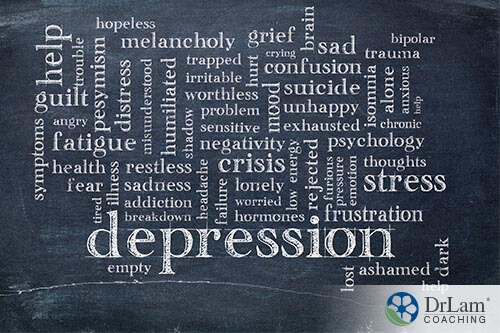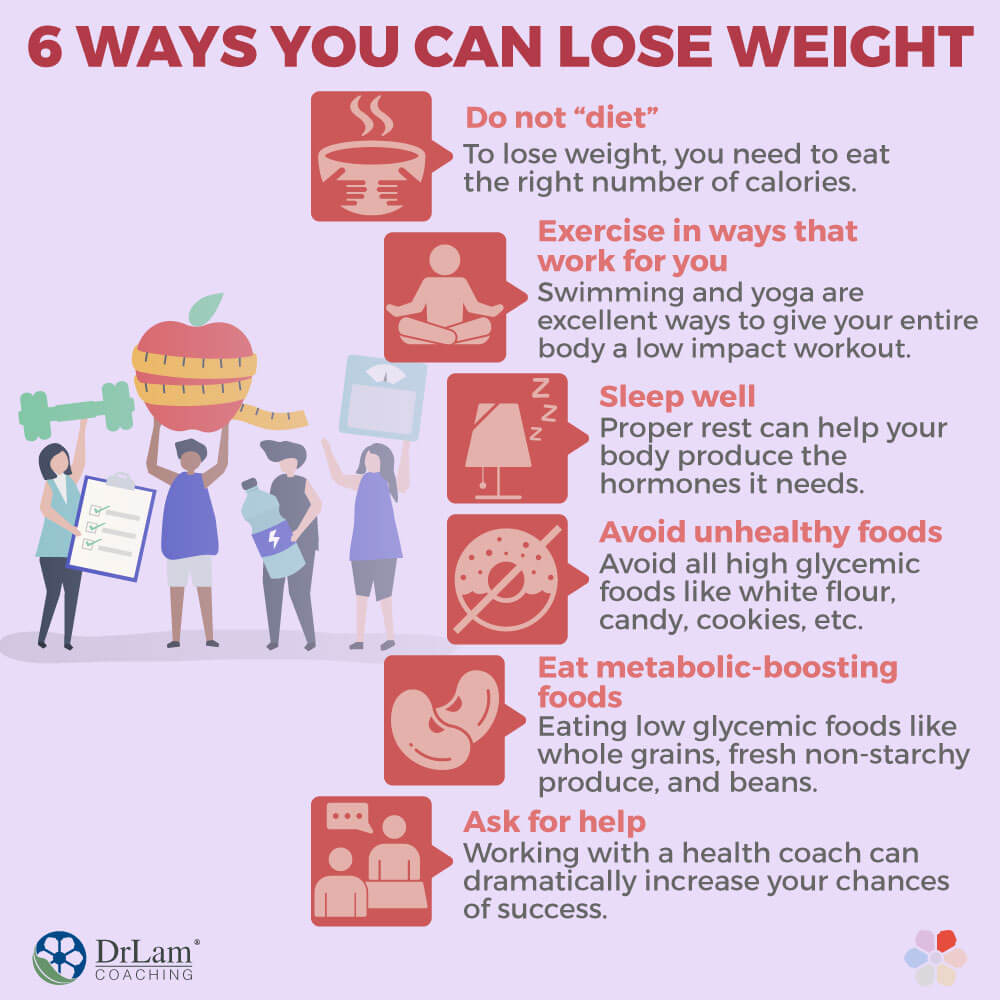 Do you remember how it was easy to drop a few pounds when you were 20 years old? A quick crash diet or adding a new exercise program and suddenly the pounds were gone! Unfortunately, as most people come to realize, the older you get, the harder it becomes. Researchers have found that around 40 years of age is the time it really starts to become difficult. Losing weight after forty is difficult but not impossible and just requires some additional knowledge and careful planning so you can successfully drop those pounds.
Do you remember how it was easy to drop a few pounds when you were 20 years old? A quick crash diet or adding a new exercise program and suddenly the pounds were gone! Unfortunately, as most people come to realize, the older you get, the harder it becomes. Researchers have found that around 40 years of age is the time it really starts to become difficult. Losing weight after forty is difficult but not impossible and just requires some additional knowledge and careful planning so you can successfully drop those pounds.
To be able to lose weight, your body has to be able to expend enough energy to burn off the calories you consume. Within your organs and muscles, chemical reactions that occur in order to produce energy—measured in calories and used by your body to keep it going—are known as metabolic reactions. Certain muscle groups require more calories to function and you’ll naturally burn more calories if you have an active lifestyle compared to a more stagnant one.
You start to lose muscle mass in your thirties at the rate of half a pound per year. Initially, you won’t notice this loss but as the years pass, more and more muscle is lost. By the time you reach forty, you will already have lost five pounds of muscle mass and more importantly, those five pounds are no longer burning calories, therefore, suddenly, losing weight after forty is harder.
Another reason losing weight after forty is difficult is that your metabolism changes. Scientists have noted—without really understanding why—that the older you get, the slower your resting metabolic rate becomes. If your body is working at a slower pace, it becomes easier to accumulate fat. In simple terms, the foods you once ate are now not going to be burned at the same rate as before, which can lead to weight gain instead of weight loss.
 For women entering menopause, losing weight after forty can be hindered by hormonal changes, including changes in the follicle-stimulating hormones (FSH), which increase after menopause. This hormone, in particular, can lower your resting metabolic rate and increase the number of white adipocytes (fat cells) in your body.
For women entering menopause, losing weight after forty can be hindered by hormonal changes, including changes in the follicle-stimulating hormones (FSH), which increase after menopause. This hormone, in particular, can lower your resting metabolic rate and increase the number of white adipocytes (fat cells) in your body.
As life changes occur, although they may go unnoticed, it’s easy to become set in your ways—eating the same things that you always eat, performing the same activities, and following the same workout regimes. However, your body is changing, and without realizing it, your health can be affected.
Before the symptoms even become noticeable, your body is already diligently working to create harmony via your NeuroEndoMetabolic (NEM) stress response. The NEM response is a guiding system that deals with stress by using a number of different circuits throughout your body. If it’s working correctly, you’ll hardly notice as it quickly deals with stressors by sending appropriate signals to various parts of your body, making feel-good hormones, and fighting against bacteria and viruses.
One of the circuits that strongly affects women is the hormonal circuit. Hormones control all the functions of your body and make sure everything is flowing smoothly. For example, your ovaries produce eggs to create a baby and hormones are required to keep the egg alive, however these hormones are monitored by your thyroid gland, which is dependent on the adrenal glands. This is known as the Ovarian-Adrenal-Thyroid (OAT) axis. Therefore, if your thyroid is not working properly, your ovaries and adrenal glands will also not work well, since they all depend on each other.
For women, losing weight after forty can be hindered by natural changes in estrogen and progesterone levels. Estrogen gradually declines however, progesterone dramatically drops, which can lead to estrogen dominance, which is characterized by the following symptoms:
Estrogen is produced in the ovaries and also in fat cells, but the latter produces a different type of estrogen called estrone. This can trigger the start of a terrible cycle: the excess estrogen tells your body to store excess fat and the fat, in turn, produces more estrogen. The cycle is worsened by weight gain and the estrogen imbalance makes losing weight after forty even more difficult.
Your body is powered by energy circulating around it. This energy, controlled by the bioenergetic circuit of your NEM stress response, can be divided into two categories: physical and mental.
The physical energy of your metabolism is related to how your body utilizes the foods you consume, transforming them into muscle movement. Your bioenergetic circuit consists of the pancreas, thyroid, and liver, all of which are important organs involved in metabolism and control sugar levels in your body. The pancreas produces insulin, which regulates the amount of glucose going in and out of cells. The thyroid secretes hormones when they are required to provide your body with energy. The liver metabolizes all the hormones and toxins in your body and helps recycle energy that your body needs to keep going.
 The mental energy—responsible for that get-up-and-go feeling in the mornings or the calm and quiet mindset essential to your overall health—is just as necessary. Without proper balance, your conscious and subconscious can become misaligned leading to a variety of symptoms, including depression, anxiety, increasing panic, and difficulty concentrating.
The mental energy—responsible for that get-up-and-go feeling in the mornings or the calm and quiet mindset essential to your overall health—is just as necessary. Without proper balance, your conscious and subconscious can become misaligned leading to a variety of symptoms, including depression, anxiety, increasing panic, and difficulty concentrating.
As your body becomes more unbalanced, regardless of whether the imbalance is cause by the hormonal circuit or the bioenergetic circuit, more symptoms of Adrenal Fatigue Syndrome (AFS) will start to appear. Your body will attempt to compensate as much as possible, but without the right nutrients needed to heal, it will begin to suffer. Adrenal fatigue can cause minor symptoms such as tiredness and mild depression, and without proper care, can escalate into debilitating symptoms that force you to stop performing normal daily activities. It’s imperative that you maintain balance in your NEM stress response system to prevent you from spiraling out of control and developing AFS.

To lose weight, the body needs balance. Whenever your body senses a decrease in food consumption, your metabolism will slow down to prevent you from losing weight, in other words, if your body thinks you’re starving yourself, it will actually try to prevent weight loss. To lose weight, you need to eat the right number of calories to avoid going into starvation mode.
As you age, you may not be able to do high-intensity workouts anymore due to painful joints or other issues. Running and lifting weights are great, but if you can’t do this, it’s possible to find other types of exercise. Swimming and yoga are excellent ways to get your heart rate up and give your entire body a workout without the detrimental effects of high impact exercise.
Proper rest can help your body produce the hormones it needs. A good night of sleep should be between seven and nine hours a night. While you’re sleeping, your body is able to heal and take care of itself, but if you don’t get enough sleep, you’ll be more susceptible to injury, particularly when you’re working out.
Carbohydrate-based foods are known as high glycemic foods and will raise blood sugar levels too quickly, so that your body is unable to digest them without utilizing large quantities of insulin (which can lead to insulin resistance). It is best to avoid white flour, candy, cookies, potatoes, white rice, and sweet drinks, which are all high glycemic foods.
The more your body has to work to digest food, the more calories it will burn in the process. Foods that are metabolism-boosting are considered low glycemic foods, including whole grains (brown rice, quinoa, steel-cut oats, amaranth), fresh non-starchy produce (tomatoes, broccoli, cauliflower, carrots, cucumbers), and beans and legumes.
Other metabolic boosting foods include quality proteins (chicken, salmon, grass-fed beef), green tea, spicy peppers, and apple-cider vinegar.
 If you’re still wondering how to implement these changes into your diet and lifestyle, it is ok to ask for help! Working with a health or nutrition coach to formulate the right eating plan for you can dramatically increase your chances of success. Not only will you obtain the knowledge necessary to implement these changes, you’ll also have more accountability and a bit of encouragement.
If you’re still wondering how to implement these changes into your diet and lifestyle, it is ok to ask for help! Working with a health or nutrition coach to formulate the right eating plan for you can dramatically increase your chances of success. Not only will you obtain the knowledge necessary to implement these changes, you’ll also have more accountability and a bit of encouragement.
Yes, it is! Losing weight after forty just requires some careful planning, healthy eating habits, safe and consistent exercise, and proper dietary and mental support from a qualified health coach, if needed. Don’t delay, it is possible!
Another year of life is a beautiful blessing. The more you work right now towards maintaining a healthy body, the easier it will be to continue losing weight after forty. Life is a gift, so enjoy all the special blessings that each year provides you with—even if you’re past forty!
Yes, it is! Losing weight after forty just requires careful planning, healthy eating habits, safe and consistent exercise, as well as proper nutritional advice and support from a qualified health coach, if needed. Don’t delay, it is possible!
